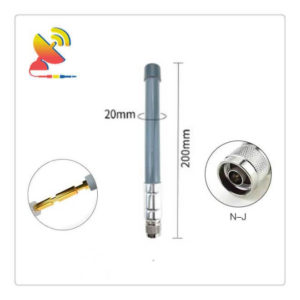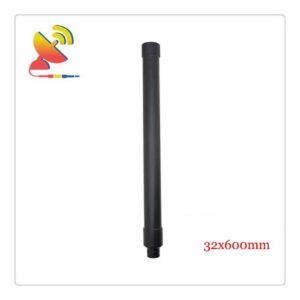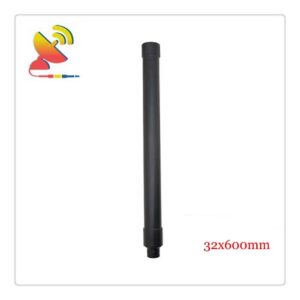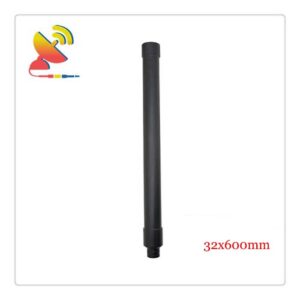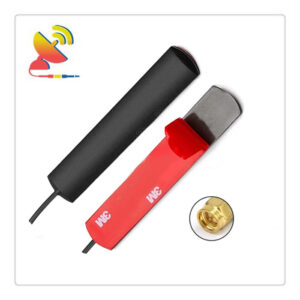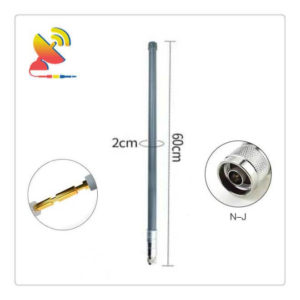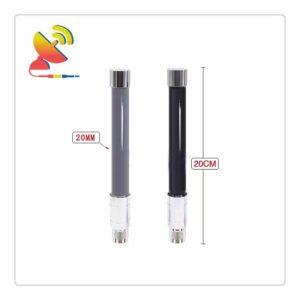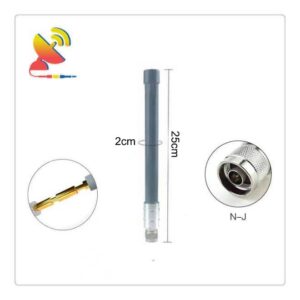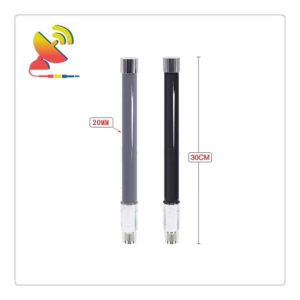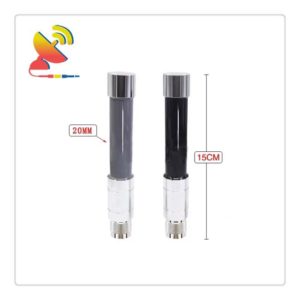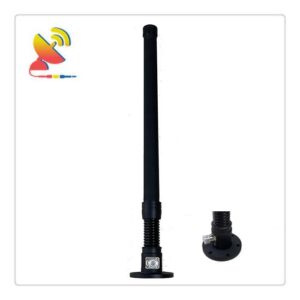LoRa Omni Antennas
LoRa Omni Antennas Manufacturer
C&T RF Antennas Inc is an indoor-outdoor LoRa Omni antennas manufacturer and omnidirectional LoRaWan antennas supplier in China.
What is LoRa?
LoRa, one of the LPWAN communication technologies, is an ultra-long-range wireless transmission solution based on spread spectrum technology adopted and promoted by Semtech, Inc.
This solution changes the previous compromise between transmission distance and power consumption, and provides users with a simple system that can achieve long-distance, long battery life, and large capacity, thus extending the sensing network.
Currently, LoRa operates mainly in global free bands, including 433 MHz, 868 MHz, 915 MHz, etc.
What is LoRa modulation?
LoRa (Long Range) is a modulation technology that provides longer communication distances compared to similar technologies. The modulation is based on spread spectrum technology, a variant of linear modulated spread spectrum (CSS) with forwarding error correction (FEC).
LoRa significantly improves acceptance sensitivity and, like other spread spectrum techniques, uses the entire channel bandwidth to broadcast a signal, resulting in a more robust channel noise and insensitivity to frequency shifts due to the use of low-cost crystal oscillators.
LoRa can modulate signals 19.5 dB below the bottom noise, while most frequency shift keying (FSK) requires a signal power of 8-10 dB on the bottom noise to modulate correctly.
Lora modulation is the physical layer (PHY) that can be used for different protocols and different network architectures-Mesh, Star, point-to-point, etc.
What is LoRaWAN?
LoRa modulation is PHY, LoRaWAN is MAC protocol for high-capacity, long-range, low-power star networks, and the LoRa Alliance is standardizing on Low Power Wide Area Networks (LPWAN).
The LoRaWAN protocol is optimized for low-power, battery-powered sensors and includes different levels of end nodes to optimize the balanced relationship between network latency and battery life. It is fully bi-directional and built by security experts to ensure reliability and security.
The LoRaWAN architecture also makes it easy to locate moving targets for asset tracking, which is the fastest-growing application for IoT. Major telecom operators are deploying LoRaWAN as a national network, and the LoRa Alliance is standardizing LoRaWAN to ensure that different national networks are interoperable.
What is a LoRa Gateway?
LoRa gateways are designed for use in long-range star architectures and are used in LoRaWAN systems.
They are multi-channel, multi-modulation transceivers that can demodulate multiple channels simultaneously, and due to the nature of LoRa can even demodulate multiple signals on the same channel simultaneously.
The gateway uses a different RF device than the end node, has a higher capacity, and acts as a transparent bridge to relay messages between the end device and the central web server.
The gateway connects to the web server via a standard IP connection, and the end devices use single-hop wireless communication to one or more gateways.
All end node communications are generally bi-directional, but also support such things as multicast feature operation, software upgrades, wireless transmission, or other high-volume release messages, which reduces wireless communication time.
There are different gateway versions depending on the required capacity and installation location (home or tower).
What is the LoRaWAN data rate?
For LoRa, LoRaWAN data rates range from 0.3kbps to 11kbps, with GFSK data rates of 50kbps in Europe.
In North America, the minimum data rate is 0.9kbps due to FCC restrictions.
To maximize end-device battery life and overall network capacity, the LoRaWAN web server manages each end-device data rate and RF output separately through an Adaptive Data Rate (ADR) algorithm.
ADR is critical for high-performance networks with scalability. In terms of infrastructure, deploying a network with minimal investment and deploying more gateways when additional capacity is needed, ADR will enable higher data rates and can expand network capacity by 6 to 8 times.
What is the difference between LoRa technology and SIGFOX, NWave?
LoRa technology uses a spread spectrum technology; SIGFOX uses narrowband BPSK modulation technology; NWave uses the Weightless standard, which is more similar to the technology used by SIGFOX.
Currently, there are more transceiver chips available for companies using ultra-narrowband technology, while LoRa can only use chips provided by Semtech.
What is a LoRa Concentrator?
The terms gateway and concentrator are both in use, but they are equivalent components in a LoRa system. In other industries, the definitions of gateway and concentrator imply different components.
How does LoRa handle interference?
A LoRa modem has up to 19.5 dB interference rejection for co-channel GMSK, or in other words, it can accept signals 19.5 dB below the interfering signal or bottom noise.
Because it has such strong interference immunity, LoRaTM modulation systems can be used not only in bands with high spectrum usage but also in hybrid communication networks to extend coverage when the original modulation scheme in the network fails.
What is the LoRa data rate?
LoRaWAN defines a specific set of data rates, but the end chip or PHY is available with multiple options. SX1272 supports data rates from 0.3 to 37.5kbps and SX1276 supports 0.018 to 37.5kbps.
What is a LoRa endpoint node or point?
LoRa end nodes are the part of the LoRa network that performs sensing or control. They are powered by batteries at a remote location. These end nodes use the LoRaWAN network protocol to establish communication with a LoRa gateway (concentrator or base station).
What is Adaptive Data Rate (ADR)?
ADR is a method of varying the actual data rate to ensure reliable packet delivery, optimal network performance, and scaling of capacity.
For example, nodes close to the gateway use higher data rates (shorter transmission times) and lower output power. Only nodes at the very edge of the link budget use the lowest data rate and maximum output power.
The ADR approach adapts to changes in the network infrastructure and supports changing path loss.
To maximize the battery life of end devices and overall network capacity, the LoRa network infrastructure manages the data rate and RF output of each end device separately by implementing ADR.
C&T RF Antennas Inc provides the RF antennas with PCB & Flex PCB & Omni antenna types, covering the below frequencies:
C&T RF Antennas Inc is an internal-external LoRa Omni antennas manufacturer and omnidirectional LoRaWan antennas supplier in China.
Contact us for more LoRa Omni antennas LoRaWan antennas details such as LoRa Omni antenna datasheet, LoRa Omni antenna pricing, LoRa Omni antenna inventory, or the LoRa Omni antenna types.
Showing 1–16 of 24 results
-
3dBi Lora Omni Antenna N Male Connector
Read more -
400-480MHz UHF Omni Antenna
Read more -
433 MHz Patch Adhesive Antenna Lora
Read more -
850-895MHz CDMA 900 Omni Antenna
Read more -
850-960MHz LoRa Dual-band Omni Antenna
Read more -
868-915 MHz ISM Adhesive Mount Antenna
Read more -
915 MHz Long Range Antenna
Read more -
920-965MHz GSM 900 Omni Antenna
Read more -
High Gain 868MHz Antenna 8dBi
Read more -
High Gain Lora Antenna 8dBi
Read more -
High-performance 433MHz Transmitter Antenna
Read more -
High-performance 868 MHz 4dBi Lora Antenna
Read more -
High-performance 915 MHz 4 dBi Lora Antenna
Read more -
High-performance Long-range 433 MHz Omni Antenna
Read more -
High-performance Transmitter 433MHz Receiver Antenna
Read more -
High-power 150W 300-400 MHz UHF Antenna
Read more

